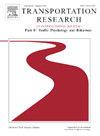"我会举手说'我过度信任自动驾驶'。我用得太随意了"--驾驶员对部分自动驾驶的使用、信任和安全感的反思
IF 3.5
2区 工程技术
Q1 PSYCHOLOGY, APPLIED
Transportation Research Part F-Traffic Psychology and Behaviour
Pub Date : 2024-11-01
DOI:10.1016/j.trf.2024.09.021
引用次数: 0
摘要
导语部分自动驾驶汽车已经上路。对自动驾驶的信任和安全感是决定使用自动驾驶的关键因素。背景:驾驶员滥用部分自动驾驶系统:驾驶员会滥用部分自动驾驶系统。误用与对自动驾驶系统的错误信任有关。研究空白:人们对使用部分自动驾驶系统时影响安全感的因素知之甚少。研究目标本研究的主要目的是提供一个全面的驾驶员视角,从心理方面探讨自动驾驶的使用,包括对自动驾驶的信任、安全感及其与自动驾驶使用的关系。研究方法对部分自动驾驶系统的用户进行了半结构化访谈(n = 103)。在内容分析的基础上,应用自然语言处理(NLP)技术进行自动文本处理。通过引导种子词分析,确定了数据集中子类别的出现次数。主要结果我们确定了与人类操作员相关、与自动化相关以及与信任和安全感相关的环境因素。与信任相比,已确定的因素与安全感的关联度更高。与手动驾驶相比,有身体和视力障碍的参与者认为使用自动驾驶更安全。手动驾驶过程中的神经质行为会降低对自动驾驶的信任度和安全感。对自动驾驶功能和局限性的正确心理模型并不能保证自动驾驶的正确使用。一个以过程为导向的新概念模型,名为 PTS-a(预测自动驾驶的信任度和安全感),综合了数据分析的结果。根据从认知到情感的方法,该模型认为,信任作为认知,先于感知安全作为情感结构。信任和安全感决定了人类操作员如何(错误地、不正确地)使用自动化。未来研究:我们建议未来的研究开展实验研究,以确定与信任自动化和感知安全相关的认知想法和信念,从而促进这些建构的可操作性,并揭示它们之间关系的本质。本文章由计算机程序翻译,如有差异,请以英文原文为准。
“I will raise my hand and say ‘I over-trust Autopilot’. I use it too liberally” – Drivers’ reflections on their use of partial driving automation, trust, and perceived safety
Introduction: Partially automated cars are on the road. Trust in automation and perceived safety are critical factors determining use of automation. Background: Drivers misuse partially automated driving systems. Misuse is associated with mis-calibrated trust in the automation. Research gap: Little is known about the factors impacting the perceived safety when using partial driving automation. Research objective: The main objective of the present study is to provide a comprehensive driver perspective on the psychological aspects of automation use pertaining to trust in automation, perceived safety, and its relationship with use of automation. Method: Semi-structured interviews (n = 103) were conducted with users of partially automated driving systems. Supplemented with content analysis, natural language processing (NLP) techniques were applied to perform automatic text processing. Guided seed-term analysis was conducted to identify the number of occurrences of the subcategories in the dataset. Main results: We identified human operator-related, automation-related, and environmental factors of trust and perceived safety. The identified factors were more strongly associated with perceived safety than with trust. Participants with physical and visual impairments reported to feel safer using the automation compared to driving manually. Neurotic behavior during manual driving contributed to lower trust and perceived safety using the automation. A correct mental model of the capabilities and limitations of the automation did not guarantee proper automation use. A novel conceptual, process-oriented model, titled PTS-a (predicting trust in and perceived safety of automation use), synthesizes the results of the data analysis. Informed by the cognition-leads-to-emotions approach, the model posits that trust as cognition precedes perceived safety as affective construct. Trust and perceived safety determine how human operators (mis-, dis-)use the automation. Future research: We recommend future research to perform experimental studies to identify cognitive-related thoughts and beliefs pertaining to trust in automation and perceived safety to contribute to the operationalization of these constructs, and unravel the nature of their relationship.
求助全文
通过发布文献求助,成功后即可免费获取论文全文。
去求助
来源期刊
CiteScore
7.60
自引率
14.60%
发文量
239
审稿时长
71 days
期刊介绍:
Transportation Research Part F: Traffic Psychology and Behaviour focuses on the behavioural and psychological aspects of traffic and transport. The aim of the journal is to enhance theory development, improve the quality of empirical studies and to stimulate the application of research findings in practice. TRF provides a focus and a means of communication for the considerable amount of research activities that are now being carried out in this field. The journal provides a forum for transportation researchers, psychologists, ergonomists, engineers and policy-makers with an interest in traffic and transport psychology.

 求助内容:
求助内容: 应助结果提醒方式:
应助结果提醒方式:


